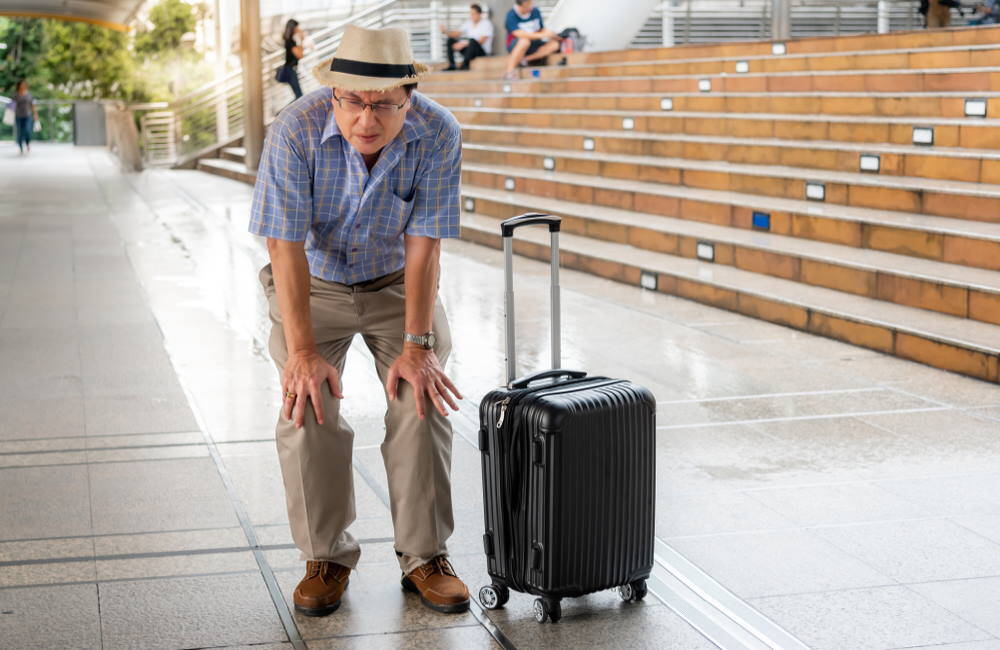For those concerned about how flying affects arthritis, it’s reassuring to know that many people do not experience much of a change in their symptoms. For those who do, asking the airline and flight attendants for support, as well as practicing some simple in-flight exercises and practices, will help them fly safely with inflammation.
You might feel concerned about how flying affects arthritis because you’ve heard stories about symptoms getting worse on flights because of changes in air pressure and having to sit in one position for an extended time. However, that does not happen to everyone. And even if it does become an issue for you, there are tips that can help you get through a flight comfortably.
Relaxation Is Key to Flying With Arthritis
One of the first things to know about how flying affects arthritis is to understand the role of stress. Feeling anxious and stressed out can make rheumatoid arthritis symptoms worse. That makes it important to take steps that will reduce stress on your trip.
Most of the stress related to air travel involves concerns about being late or taking a wrong turn in the airport. Make sure to arrive at the airport at least two hours before your flight departs. That gives you a time cushion if you run into long lines and other delays. Also, if you are not familiar with an airport, look at maps so you can plan a route to reach your gate. It also helps to know where you can park and how to get there before you even leave the house.
Ask the Airline for Support
For those with severe cases of arthritis that impacts their mobility, it’s important to contact the airline ahead of time and ask for support. That can include providing wheelchairs or special shuttles, giving you the chance to board the plane before other passengers, and allowing airline workers to carry luggage and store it in overhead bins for you. These services can make the difference between a comfortable and uncomfortable journey.
Tips for Flying Safely With Inflammation
If you are looking for information on how to fly safely with inflammation, the following tips can help you manage pain and stiffness. A good place to start is by doing simple in-flight exercises. They include:
- Lift and twirl your feet as if drawing circles with your toes. Continue for 15 seconds, then reverse direction.
- Lift and lower your toes with your heels on the floor, then lift and lower your heels with the balls of your feet on the floor.
- With both feet on the floor, bend forward and reach for your ankles, holding the position for 15 seconds before sitting back up
- Raise your hands over your head. Grab the wrist of the opposite arm and gently pull to one side, holding for 15 seconds, then repeat with the other arm.
These other tips from Arthritis Health can help you keep comfortable during your flight.
A Preflight Workout
Don’t try anything new for this. However, if you do yoga or other exercises that help loosen your muscles, then about a half hour of that exercise before the flight can keep you from becoming too stiff in the plane seat.
Pack Light, Give Yourself Legroom
This is good advice for every traveler, but it’s especially important for those with arthritis. Pack lightweight, rolling luggage. Avoid lifting anything heavy. Also, even if it costs a bit extra, get the seats near the front of the plane that have more legroom. Even an extra inch or two will allow you to stretch out more and avoid stiffness.
How to Travel Without Checked Baggage
Carry Pain Medication on the Flight
A common mistake for travelers is to pack their medications in the bag they end up checking at the airport. Make sure to put your pain medication in your carry-on bag. That way, you can easily access it if needed during the flight. For relief from joint and back pain, you may also want to carry on handheld heat or cold packs that you can apply during the flight.
Flying with Oxygen & Medications
Get the Aisle Seat
Many people prefer the aisle seat for two reasons: you can stretch out your legs and it’s easier to get up and walk around. Both of these are huge benefits for those with arthritis. If you can’t get a seat with extra legroom, try to at least get an aisle seat.
Support Your Back
There are two ways to provide yourself better back support. First, carry a back roll or pillow that you can place between the seat and your lower back, providing yourself extra support. Also, practice good posture. Sit with your hips and knees at 90 degree angles. Place something under your feet if needed (flight attendants may have something if you do not). You should not have to avoid taking a trip over concerns about how flying affects arthritis. By keeping these tips in mind, staying relaxed and asking for help when needed, it’s possible to enjoy your journey in safety and comfort.

